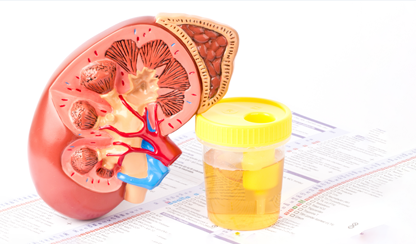
A team of our researchers has found that repeated measurement of albuminuria would provide a far more accurate measure of the progression of diabetic chronic kidney disease (CKD) than current practices.
Standard practice to assess the progression of diabetic kidney disease compares the level of albumin in urine to a previous test. However, albuminuria can vary significantly within an individual from day to day, which presents a challenge to a doctor’s ability to accurately interpret disease progression.
In this paper, published in the American Journal of Kidney Diseases, the team of Dr Julian Sacre, Dr Natasha Rasaratnam and Professor Jonathan Shaw compared four tests repeated within a 28-day period from 826 participants in the Baker Institute’s PREDICT study. They found the amount of albuminuria in a repeated test can be as high or as low as four times the original result.
“We know that for someone living with type 2 diabetes, that their urine albumin-creatinine ratio (UACR) can vary on a day-to-day basis, reflecting fluctuations in blood pressure and behavioural factors including exercise and posture,” Dr Sacre said. “However, many healthcare professionals may be surprised to see that it can vary by such a large extent.
“Although the method and timing of urine collections can be standardised, it is very difficult to control for all of the factors that underlie within-individual variability. Therefore, we would advocate for multiple urine collections on different days to get a complete picture of albuminuria.”
Nevertheless, while the team found that repeated measurements are important to improve detection of changes in an individual patient over time, Dr Sacre said that fewer urine collections may be required for the purposes of CKD diagnosis.
“If the first result is very high or very low, a repeat test is unlikely to call that into question and is probably unnecessary. However, if the first result lies close to the diagnostic threshold, the degree of within-individual variation can certainly be enough to mean that an individual’s albuminuria status would be classified differently from one day to the next. This presents a real challenge to our ability to accurately detect and interpret changes in albuminuria.”
So how many tests would Dr Sacre recommend would provide an accurate picture of disease progression?
“There is no single answer regarding the number of repeat collections required for the measurement of UACR, rather, clinicians and researchers must determine the appropriate number based on the intended use,” he said.
“A key outcome of this study is in the development of some online tools for clinicians to access contemporary practical guidance on the number of urine collections required for a variety of clinical and research applications.”






